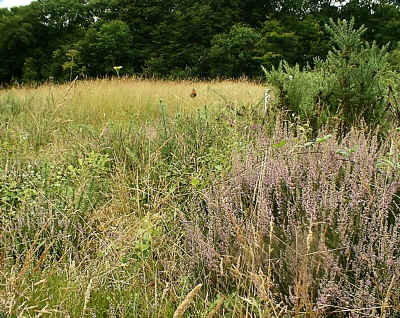 |
1. By
2000, much of the northerly half of the project site was beginning to resemble a grassy
heath, with substantial amounts of Heather and gorse, interspersed with grasses and
bramble. Bell Heather was much less abundant
than Heather, but was found with greatest frequency in section 7 (spring cut) and 8
(autumn cut). |
. |
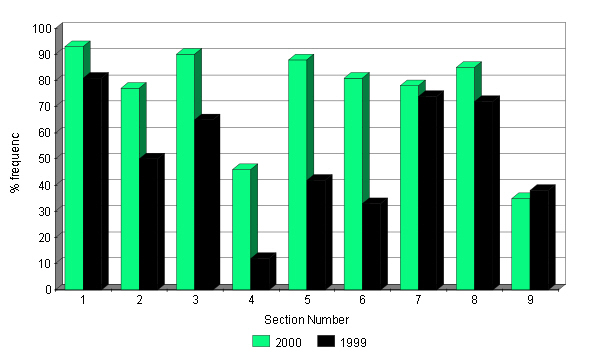 |
2. The
most dominant species on the project site in 2000, was the moss Eurhynchium praelongum. This had increased its abundance over the whole project
site by more than 25% over the year. This
species had increased in every single section of the project site apart from section 9,
where there was little difference in abundance from the preceding year.
Chart |
. |
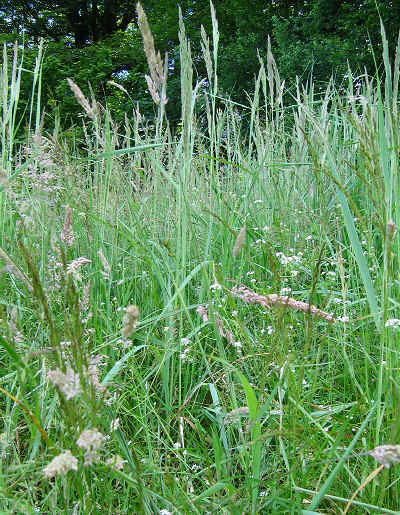 |
3. Eurhynchium praelongum was closely followed in overall dominance of the whole site
by the grasses, Common Bent and Yorkshire Fog (left),
which were the two top dominant species the preceding year
Both grass species had declined in the control
section (section 5).
Yorkshire Fog continued to show a trend of
decreasing abundance across most of the site. This trend had also been noted the previous
year. The amount of Common Bent remained more or less the same.
Chart |
. |
 |
4.
The southern part of the project site had developed into grassy flower meadows, dominated
by Common Bent and Yorkshire Fog, intermingled with a variety of sedges and herbs. Violets (left) which were one of the few species to occur in every single
section of the project site, particularly increased in abundance in the southern sections
(1 - 4) over the year. (Chart)
Other herbs such as Greater Bird's-foot Trefoil,
Hedge Woundwort , Yellow Pimpernel and Bugle also increased in abundance in this area of
the project site. |
. |
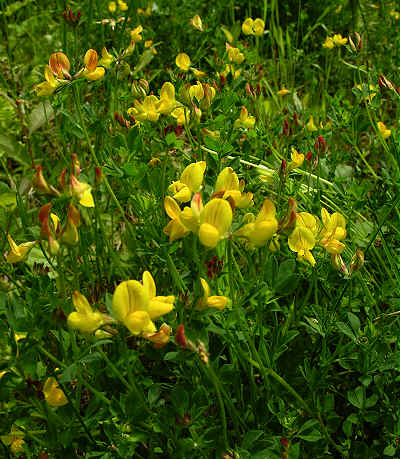 |
5.
Greater Bird's-foot Trefoil (left)
and Bugle had also increased noticeably in section 6, which is cut three times a year. In contrast, the amount of gorse had declined substantially
in this section. This was significant because there had been little change over much of
the rest of the project site, with the exception of spring cut section 4. In this section,
gorse had increased in abundance. (Chart) |
. |
 |
6.
Heather (left) continued to do best in spring cut sections and in section 9
which is handweeded. (Chart) The amount of Heather recorded in the sampled quadrats in
section 8 (autumn cut) decreased dramatically this year. However, Heather is a tough plant
once established and is easily able to compete with other herbaceous species. It is highly
unlikely to have declined over a single year to the extent suggested by the survey.
This result is much more likely to be due to the
extremely patchy nature of the distribution of the Heather within the section. The
position of the majority of the quadrats sampled was randomly determined and chance may
have dictated that most of the quadrats fell outside areas of Heather growth.
In general observations of the section, large
amounts of Heather and Bell Heather were noted in some areas |
. |
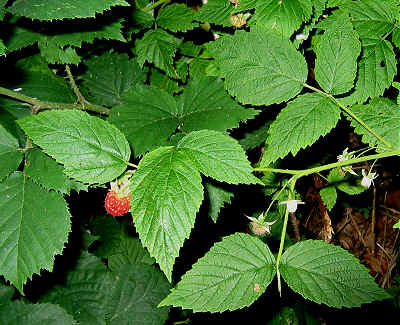 |
7.
Raspberry was recorded in five of the project sections, but
mainly in sections 3, 4 and 5. It had not previously been recorded on the project
site. Raspberry is a low, straggling shrub
commonly found on woodland margins, in open woods and on heaths and commons. |
. |
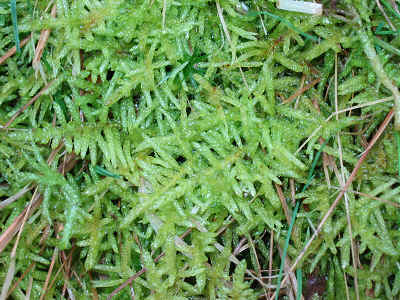 |
8.
The moss Hypnum jutlandicum,
which is characteristic of heathland habitats, increased its abundance across the project
site, being found for the first time in every single section. It showed the greatest increase in section 8, which is cut in
the Autumn. Chart |
. |
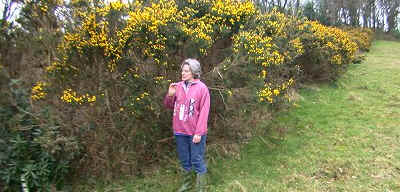 |
9.
The control section (5) which has had no management, had become a dense
tangled mass of gorse (much of it up to 3 metres tall) intertwined with brambles. Tree saplings were well established amongst the gorse, with
the main species being birch, cherry, Hazel and willow. In places, these were beginning to
overtop the gorse. |
. |
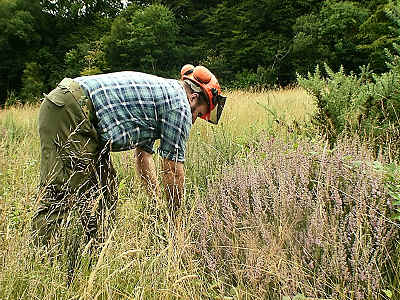 |
10.
The hand weeded section (9) had changed little over the
year. It continued to be the section with the most Heather and the one visually closest to
a lowland heath habitat. The only notable
change in this section was that Bramble had increased in abundance and had become the
dominant species, overtaking Silver Birch. |
. |
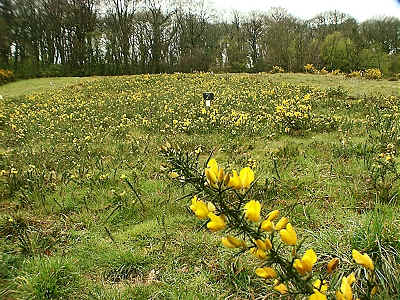 |
11.
Gorse was still one of the most dominant species in section 7. The vegetation in this section continued to be utterly
different to any of the other sections. (See the 1999 section description for discussion of this point.) |
. |
 |
12.
Rhododendron
ponticum continued to expand
across the project site and was by now found in almost half of the sections. This highly invasive, non-native species had formerly covered
the project site as an understory layer beneath coniferous woodland. |